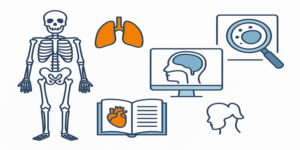In the contemporary workplace, employees can broadly be classified into two categories: average employees and great employees. This distinction is critical for organisational success, as the collective performance of individuals directly influences productivity, innovation, and workplace culture. Recognising and understanding the attributes that separate great employees from their average counterparts enables organisations to design effective talent management strategies, build high-performance teams, and foster an environment where excellence thrives.
This article explores the key characteristics of average versus great employees, examining their behaviours, motivations, and contributions. It also highlights how organisations can cultivate a culture that nurtures greatness among employees.
1.0 Average Employees
Average employees typically do what is required of them but rarely go beyond expectations. Their attitudes and behaviours often reveal patterns that undermine both individual growth and collective performance.
1.1 Lack of Motivation and Engagement
Average employees often come to work primarily for the paycheque, with their motivation being largely extrinsic. They lack the intrinsic drive to excel and may show minimal curiosity or interest in learning new skills. According to Deci and Ryan’s (1985) Self-Determination Theory, intrinsic motivation—engaging in work out of genuine interest and satisfaction—leads to superior outcomes compared to extrinsic motivation. Employees who lack this intrinsic motivation risk stagnating, both personally and professionally.
1.2 Resistance to Change
Change is an unavoidable reality in the modern workplace. However, average employees tend to resist change, clinging to the comfort of established routines. This rigidity can stifle innovation and hinder organisational adaptability. Kotter (1996) argues that resistance to change is a major barrier to organisational transformation, often causing delays in implementation and creating inefficiencies.
1.3 Poor Planning and Health Habits
Average employees frequently struggle with time management and planning, leading to inefficiencies, missed deadlines, and reduced productivity. Their approach to tasks is often reactive rather than proactive. In addition, poor health habits such as lack of exercise, poor diet, or inadequate sleep may contribute to absenteeism, reduced energy, and lower resilience. Cooper, Dewe and O’Driscoll (2001) highlight how stress and poor health behaviours negatively impact both productivity and overall organisational performance.
1.4 Blame Culture and Fear-Based Motivation
When mistakes occur, average employees often resort to blame-shifting rather than taking responsibility. This behaviour fosters a toxic work environment where accountability is lacking. Kane-Urrabazo (2006) emphasises that fear-based motivation, where employees act out of anxiety rather than ambition, erodes trust and stifles collaboration. Such cultures prevent individuals from learning from mistakes and adapting effectively.
1.5 Lack of Contribution and Team Spirit
Average employees tend to contribute only the minimum required, showing limited initiative. They rarely offer new ideas or challenge existing processes. Furthermore, their lack of enthusiasm can dampen team morale. Edmondson (1999) introduced the concept of psychological safety, arguing that teams thrive when individuals feel safe to contribute ideas and take risks. Average employees, however, often avoid contributing meaningfully, thereby weakening team dynamics.
2.0 Great Employees
Great employees distinguish themselves through their mindset, behaviours, and impact. They bring energy, innovation, and accountability to their roles, elevating not only their own performance but also that of those around them.
2.1 Passion for Work and Continuous Learning
Great employees are driven by intrinsic motivation. They take pride in their work and strive for excellence beyond external rewards. They actively pursue continuous learning, acquiring new skills to remain relevant in a rapidly changing environment. According to Kolb’s (1984) Experiential Learning Theory, individuals who embrace learning cycles—through reflection, conceptualisation, and experimentation—are better equipped to adapt and innovate.
2.2 Embracing Change
Unlike their average counterparts, great employees view change as an opportunity rather than a threat. Their adaptability enables organisations to transition smoothly during restructuring, technological advancements, or shifts in market demands. Heifetz, Grashow and Linsky (2009) describe adaptability as a hallmark of effective leadership, with employees who embrace change contributing significantly to long-term resilience.
2.3 Strategic Planning and Health Consciousness
Great employees demonstrate strong self-management skills, including planning, prioritisation, and goal-setting. They work systematically and set ambitious yet achievable objectives. Moreover, they understand the link between physical well-being and productivity. Maintaining healthy habits enables them to sustain high levels of energy and focus. Cameron and Quinn (2011) emphasise the importance of personal discipline and resilience in fostering a high-performance culture.
2.4 Responsibility and Excellence
Accountability is a defining trait of great employees. They readily take ownership of their actions, learning from setbacks rather than deflecting blame. This proactive approach fosters a culture of excellence. Covey (1989) argues that individuals who embrace responsibility are better positioned to achieve lasting success, as they focus on solutions rather than excuses.
2.5 Contribution and Leadership
Great employees are often the innovators within teams, consistently contributing fresh ideas and process improvements. They are proactive problem-solvers who dislike inefficiency. Their ability to inspire and motivate peers often positions them as informal leaders, regardless of their job title. Senge (1990) notes that organisations thrive when individuals contribute to the collective learning process, a trait commonly embodied by great employees. Their positive attitude and collaborative spirit enhance team cohesion and workplace culture.
3.0 Cultivating Great Employees
While some traits of great employees may be innate, organisations play a crucial role in nurturing and developing greatness.
3.1 Building a Learning Culture
Organisations should encourage continuous learning and development. By investing in training programmes, mentorship opportunities, and career development initiatives, employers can transform average performers into great employees. Garavan et al. (2021) highlight that a culture of learning enhances both engagement and performance.
3.2 Promoting Psychological Safety
Encouraging employees to share ideas without fear of ridicule fosters innovation and collaboration. Edmondson (1999) emphasises that creating a climate of psychological safety allows employees to take risks, challenge the status quo, and grow.
3.3 Rewarding Initiative and Innovation
Recognising and rewarding employees who go beyond basic expectations reinforces desirable behaviours. Recognition programmes that value not only performance outcomes but also creativity, teamwork, and accountability are particularly effective (Armstrong and Taylor, 2020).
3.4 Leadership and Role Modelling
Managers and leaders must act as role models, demonstrating the traits of great employees—passion, adaptability, and accountability. Employees are more likely to emulate positive behaviours when leaders embody them (Yukl, 2013).
The distinction between average and great employees is stark and has significant implications for organisational performance. Average employees are often characterised by lack of motivation, resistance to change, poor planning, and a fear-based mindset. In contrast, great employees exhibit passion, adaptability, strategic planning, accountability, and leadership qualities.
While some individuals may naturally lean towards greatness, organisations can cultivate these traits by fostering a culture that values learning, innovation, and responsibility. By creating supportive environments and recognising excellence, businesses can nurture more employees to transition from average to great. In doing so, they build resilient, high-performing workforces that drive long-term organisational success.
References
Armstrong, M. and Taylor, S. (2020) Armstrong’s Handbook of Human Resource Management Practice. 15th edn. London: Kogan Page.
Cameron, K.S. and Quinn, R.E. (2011) Diagnosing and Changing Organisational Culture: Based on the Competing Values Framework. Hoboken: John Wiley & Sons.
Cooper, C.L., Dewe, P.J. and O’Driscoll, M.P. (2001) Organisational Stress: A Review and Critique of Theory, Research, and Applications. Thousand Oaks: Sage.
Covey, S.R. (1989) The 7 Habits of Highly Effective People: Powerful Lessons in Personal Change. New York: Simon & Schuster.
Deci, E.L. and Ryan, R.M. (1985) Intrinsic Motivation and Self-Determination in Human Behaviour. New York: Springer.
Edmondson, A.C. (1999) ‘Psychological safety and learning behaviour in work teams’, Administrative Science Quarterly, 44(2), pp. 350–383.
Garavan, T.N., McCarthy, A. and Carbery, R. (2021) Training and Development: Contemporary Issues and Challenges. London: Routledge.
Heifetz, R., Grashow, A. and Linsky, M. (2009) The Practice of Adaptive Leadership: Tools and Tactics for Changing Your Organisation and the World. Boston: Harvard Business Press.
Kane-Urrabazo, C. (2006) ‘Management’s role in shaping organisational culture’, Journal of Nursing Management, 14(3), pp. 188–194.
Kolb, D.A. (1984) Experiential Learning: Experience as the Source of Learning and Development. Englewood Cliffs: Prentice Hall.
Kotter, J.P. (1996) Leading Change. Boston: Harvard Business Review Press.
Senge, P.M. (1990) The Fifth Discipline: The Art and Practice of the Learning Organisation. New York: Doubleday/Currency.
Yukl, G. (2013) Leadership in Organisations. 8th edn. Harlow: Pearson.









